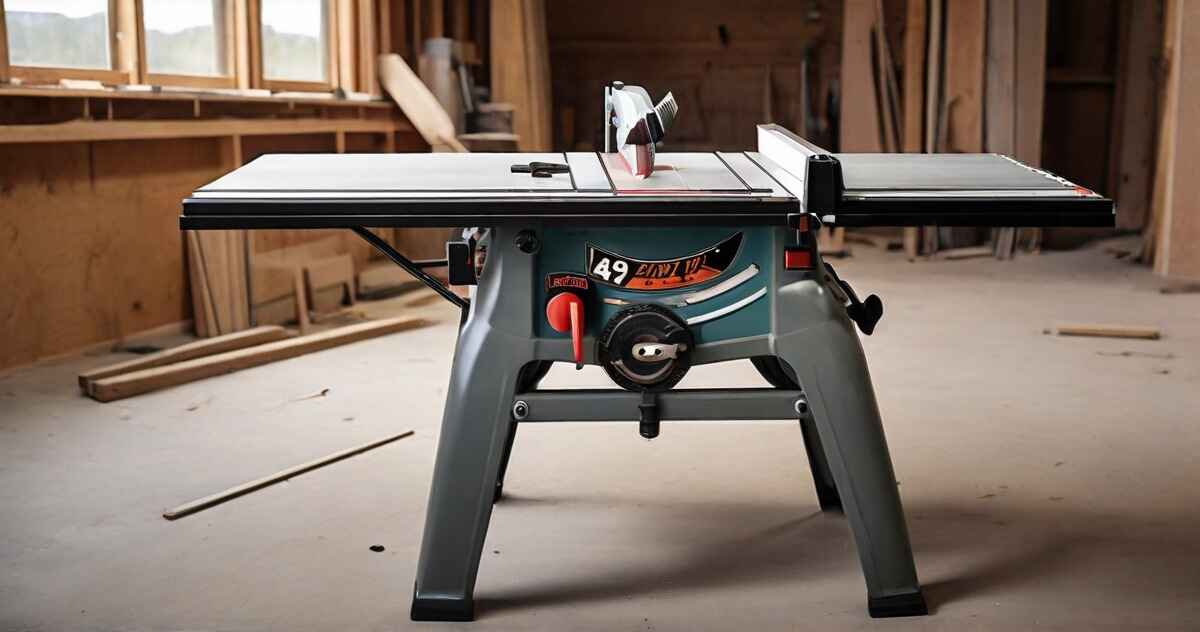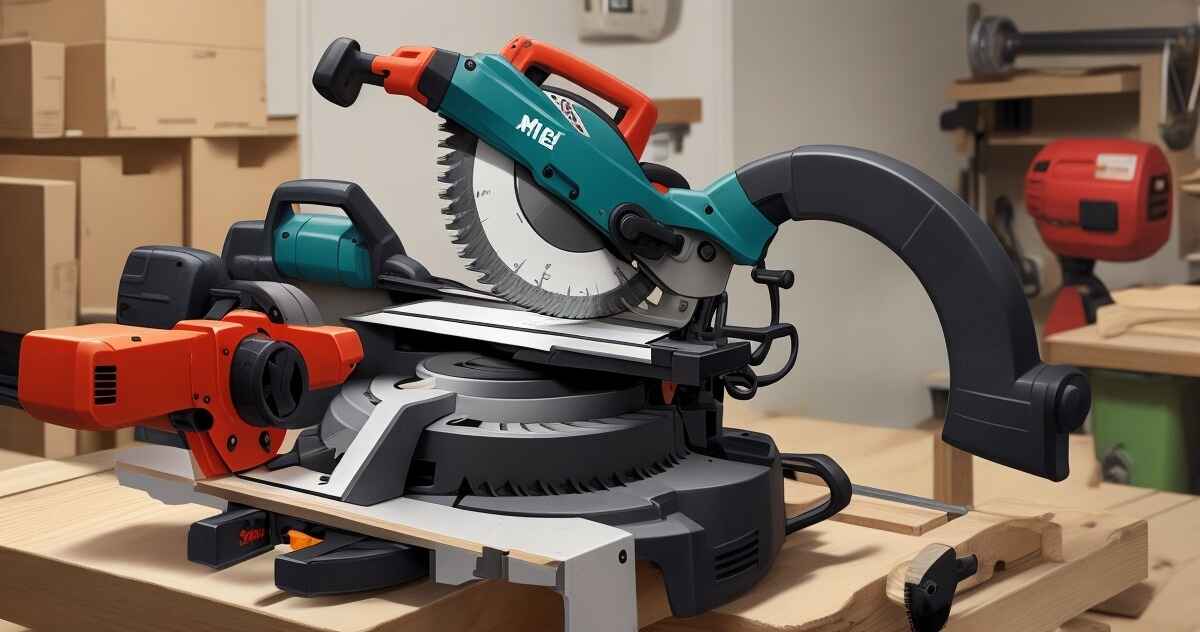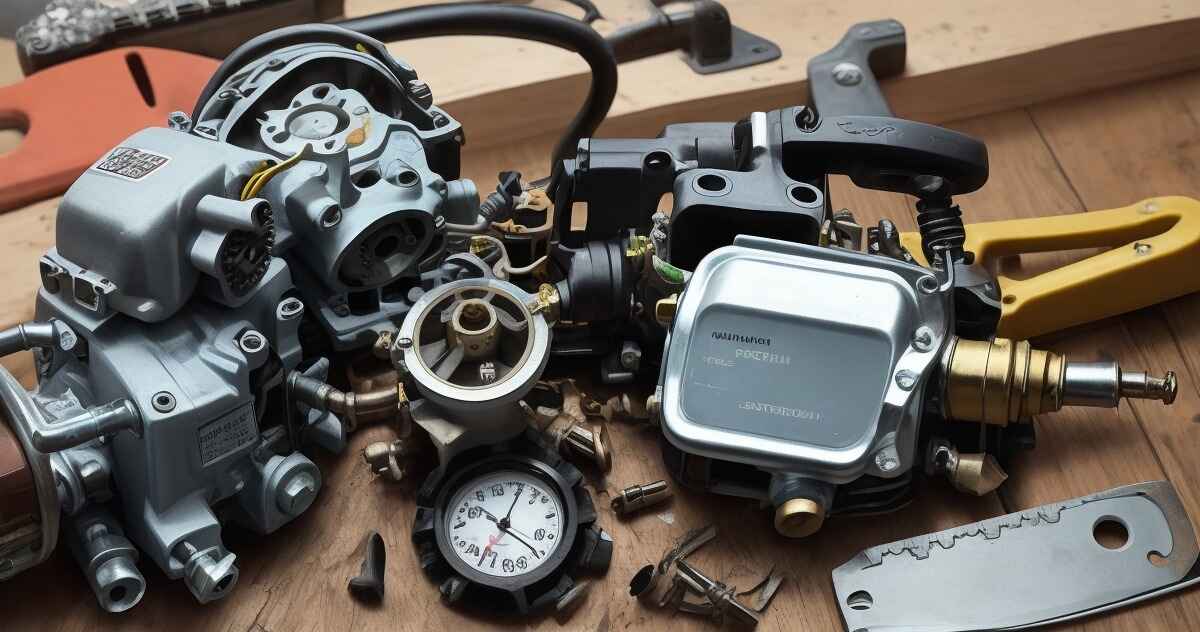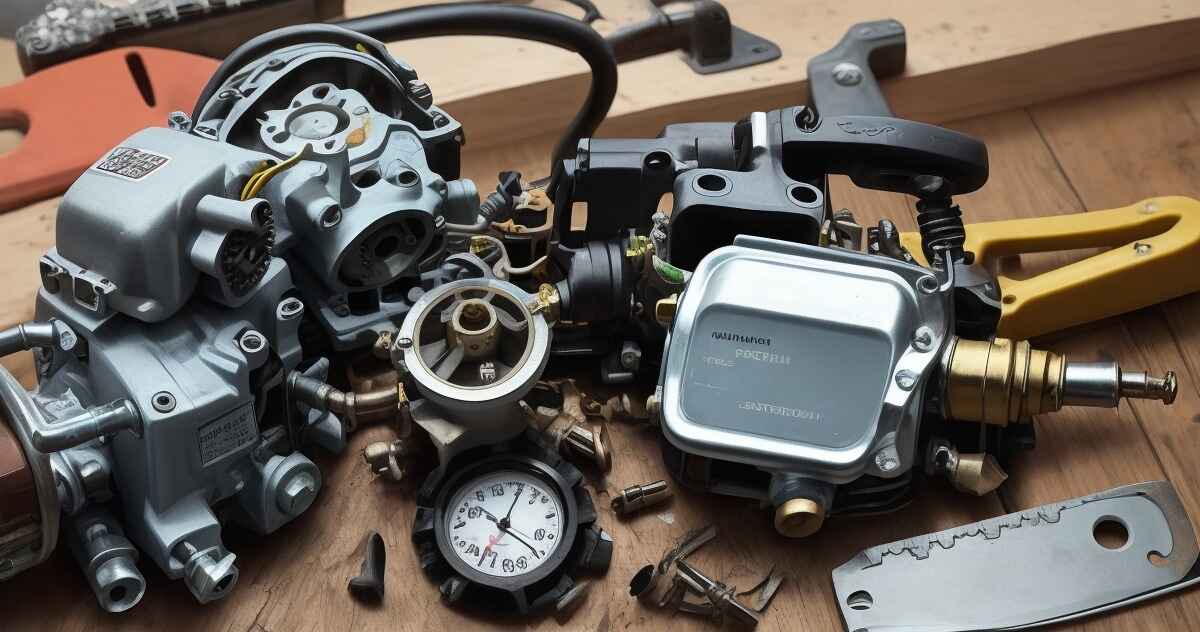Table saws are essential tools for woodworkers and DIY enthusiasts alike. Understanding how much does a table saw weigh is crucial whether you are setting up a workshop, moving, or considering a used table saw. Our discussion will cover table saw types, weight ranges, and factors affecting weight. This article will teach you how a table saw weighs and how it impacts your woodworking projects.
Understanding Table Saws
Let’s briefly discuss table saws before we discuss weight. They are indispensable for woodworking and DIY projects because they make precise cuts. Woodworkers need a table saw to craft furniture and create intricate designs.
Factors Affecting Table Saw Weight
For a table saw to be portable and stable, several factors determine its weight. Selecting the right table saw depends on understanding these factors.
1. Material
The material used in constructing a table saw directly affects its weight and durability. While lighter materials may make a table saw more portable, it is essential to consider the long-term durability and sturdiness of the tool. Opting for a table saw made with high-quality metals like cast iron and steel ensures both stability and longevity.
2. Portability Features
Certain table saws come with built-in features that enhance their portability. These features, such as carts or stands with sturdy wheels, make it easier to transport the table saw across job sites or workshops. While these additional features may add weight to the table saw, they provide convenience and ease of use, especially when moving the saw frequently.
3. Size and Design
The size and design of a table saw can significantly impact its weight. Larger table saws with larger fences, motors, and wider work surfaces tend to be heavier. However, larger table saws often offer more power and the ability to handle larger stock. Consider the size and design of the table saw to the space you have available and the type of work you plan to undertake.
4. Accessories and Attachments
The inclusion of accessories and attachments can add weight to a table saw. These may include extension wings, fence rails, miter gauges, and dust collection systems. While these components enhance the functionality of the table saw, they should be considered when evaluating the overall weight and portability of the tool.
Types of Table Saws and Their Weight Ranges
Portable Table Saws: Weight Ranges and Options
Portable table saws are designed to be lightweight and easily transported. They are popular among contractors and woodworkers who frequently move from one job site to another. Let’s explore some of the most common portable table saws available on the market and their respective weights.
| Table Saw Model | Weight (in pounds) |
| DeWalt DWE7485 | 45 |
| Bosch GTS1031 | 52 |
| Makita 2705 | 65 |
| Delta 36-6022 | 69 |
| SawStop Jobsite Saw | 79 |
| Skilsaw SPT99-11 | 88 |
| Bosch 4100XC-10 | 99 |
| Metabo HPT C10RJ(S) | 96 |
| Ridgid R4513 | 95 |
| Milwaukee 2736-21HD | 100 |
Models and any additional accessories may vary slightly in weight. Portable table saws generally weigh 45 pounds to 100 pounds. When selecting a portable table saw, consider not only the weight but also the other factors mentioned earlier that influence a table saw’s weight and portability.
Stationary Table Saws: Weight Ranges and Considerations
Stationary table saws, also known as cabinet or contractor saws, are designed for more permanent setups in workshops or dedicated workspaces. These table saws are typically heavier and offer more power and stability for larger woodworking projects. Let’s explore the weight ranges of different types of stationary table saws.
1. Contractor Table Saws
Contractor table saws are versatile tools that strike a balance between portability and power. They are heavier than portable table saws but lighter than cabinet table saws. The weight of contractor table saws generally ranges from 200 pounds to 400 pounds. Here are some popular models and their respective weights:
| Table Saw Model | Weight (in pounds) |
| Craftsman Evolve 28461 | 200 pounds |
| Delta 36-725 | 230 pounds |
| DeWalt DWE7491RS | 110 pounds (without stand), 132 pounds (with stand) |
| Bosch 4100-09: 60 pounds (without stand) | 60 pounds (without stand), 99 pounds (with stand) |
2. Cabinet Table Saws
Cabinet table saws are heavy-duty machines designed for professional woodworkers and larger-scale projects. These table saws offer exceptional power and stability but are less portable than other types. A cabinet table saw can weigh 400 pounds to over 1000 pounds. Examples:
| Table Saw Model | Weight (in pounds) |
| Powermatic PM1000 | 465 pounds |
| SawStop PCS175 | 490 pounds |
| Delta 36-L552 | 600 pounds |
| Laguna Tools Fusion F3 | 420 pounds |
Portability Features
A table saw can be made more portable without sacrificing weight. Check out some of these features.
1. Stands and Carts
Many portable table saws come with built-in stands or carts, making them easier to transport. These stands or carts provide support and stability while allowing you to move the table saw effortlessly across a job site or workshop. However, it’s important to note that these stands and carts can add additional weight to the overall setup.
2. Wheels
Wheels are another feature that can improve the portability of a table saw. Sturdy wheels enable you to maneuver the table saw smoothly, even across rough terrain. However, if you frequently work on uneven ground, the effectiveness of the wheels might be compromised. In such cases, detaching the table saw from its stand and carrying it manually may be necessary.
Considerations for Choosing a Table Saw Weight
a. Portability:
If you need to move the saw frequently or have limited workspace, prioritize lighter models.
b. Stability:
Heavier saws offer better stability, crucial for precise cuts, and reduced vibration during operation.
c. Workspace Limitations:
Choose a saw weight that fits comfortably in your workspace and allows for easy maneuvering.
Tips for Choosing the Right Table Saw:
- Identify Your Needs and Budget:
Determine the types of projects you will undertake and establish a budget that aligns with your requirements.
- Research Different Models:
Compare weights, features, and specifications of various table saw models to find the best fit for your needs.
- Consider Your Workspace Layout:
Assess your workshop layout and choose a table saw weight that accommodates your available space.
- Test Before Purchase:
If possible, visit a store to physically assess the weight, features, and maneuverability of a table saw before making a purchase.
Tips for Moving and Transporting a Table Saw
Moving a table saw, whether portable or stationary, requires careful planning and execution to ensure both your safety and the integrity of the tool. Here are some tips to help you move a table saw:
- Portable Table Saws: If you need to move a portable table saw, remove any attachments or accessories that can be detached easily, such as the fence, extension wings, and miter gauge. This will reduce the weight and make the saw more manageable to carry. Consider using a sturdy carrying case or bag to protect the saw during transportation.
- Stationary Table Saws: Moving a stationary table saw requires more effort and may require disassembling certain components. Start by removing the fence rails, extension wings, and any other detachable parts. If possible, detach the motor as well, as it adds significant weight. Use caution and consider enlisting the help of another person to lift and move the saw safely.
- Use Proper Lifting Techniques: Be careful when lifting a table saw, whether portable or stationary. Keep your back straight, bend your knees, and lift with your legs. You may need help lifting the table saw if it is too heavy for you alone.
- Protect the Table Saw: During transportation, protect the table saw from bumps and scratches by using padding or blankets. Secure any loose parts or accessories to prevent them from getting lost or damaged during transit. If using a vehicle, ensure the table saw is properly secured to prevent it from shifting or falling.
Frequently Asked Questions (FAQs)
1. How much does a table saw weigh in pounds?
The weight of a table saw varies based on its type and model. Portable table saws range from 45 to 100 pounds, contractor table saws weigh between 200 and 400 pounds, and cabinet table saws can be heavier, ranging from 400 to over 1000 pounds.
2. How much does a table saw weigh in kg?
To convert the weight from pounds to kilograms, divide the pounds by 2.205. For instance, a 100-pound table saw would be approximately 45.36 kilograms.
3. Can one person load a table saw into a vehicle?
Loading a table saw into a vehicle depends on its weight and the individual’s strength. Portable table saws are generally lightweight enough for one person to handle. However, for heavier stationary table saws, it is recommended to seek assistance or use appropriate lifting equipment for safe and secure transportation.
4. How can I hide a table saw from my spouse?
Hiding a table saw may not be the best approach. Instead, consider discussing your woodworking plans with your spouse. Clear communication and compromise can lead to a better understanding and support for your woodworking endeavors.
5. What is the lightest table saw available?
The lightest table saws typically fall within the portable/jobsite category, weighing around 50-60 lbs.
Concluding Thoughts
Understanding how much does a table saw weigh is essential for making informed decisions when purchasing, moving, or setting up a workshop. Portable table saws offer convenience and ease of transport, with weights ranging from 45 pounds to 100 pounds. Contractor table saws strike a balance between portability and power, weighing between 200 pounds and 400 pounds. Cabinet table saws, designed for professional use, are heavier, ranging from 400 pounds to over 1000 pounds. By considering the weight, portability features, and other factors discussed in this guide, you can choose the right table saw that suits your woodworking needs.




